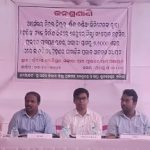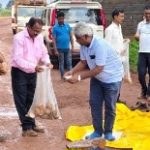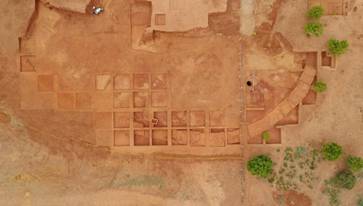
New Delhi: The Archaeological Survey of India’s (ASI) excavation at Gottiprolu near Naidupeta in Nellore (now renamed as Sri Potti Sri Ramulu) district, Andhra Pradesh has discovered the remains of a huge settlement surrounded by a massive brick enclosure. Among many other antiquities unearthed are one life size Vishnu sculpture and a wide variety of pottery of the early centuries of current era.
The most outstanding discovery is of massive sized brick enclosure wall at the southern part of the mound. This structure is of baked bricks and exposed to a length of more than 75 meters with an average width of about 3.40 meters, which rise to a height of nearly 2 meters and runs in a curvilinear pattern towards the northern end of the mound.
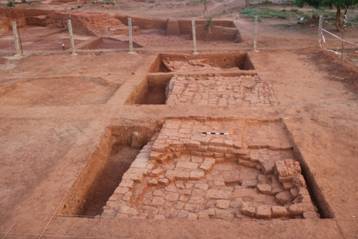
Apart from the excavated remains, one of the most major find was the discovery of a buried Vishnu sculpture from the western part of the village.
Subsequent excavations conducted around the image revealed it to be a life size image of Vishnu measuring about 2 meters in height. It displays a four-armed Vishnu standing over a pedestal carrying chakra and conch in his upper right and left hands respectively. The lower right is in bestowing boon and the left hand in katihastha (resting on the hip) posture. The iconographical feature like the elaborate head gear, thick holy thread and decorative drapery dates it to Pallava period (circa 8th cent. CE).
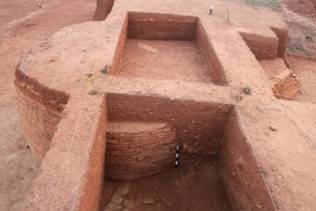
Other interesting antiquity retrieved is the molded female terracotta figurine with two hands lifted upwards.
Interesting pottery finds are the base of conical jars placed at the eastern side of the structure. Such conical jars are widely distributed in Tamil Nadu and considered to be imitated variety of Roman Amphorae jars.
These settlements could have been an important trade centre as indicated by the presence of imitated amphorae wares that were mostly used to transport liquid commodities.
The proximity of the site to the seacoast suggests that the site could have served as a strategic settlement involved in maritime trade. Further research will reveal interesting facts about the site as trade centre.
Other major retrieved antiquities unearthed are copper and lead coins, iron spear head, stone celts, terracotta beads, ear stud in semi precious stone and hopscotches. The ceramic assemblage of the site consisted of fine quality black and red ware collected from the lower levels, conical jars, rouletted sherds, russet coated ware etc. The extensively used goblet shaped ware indicates the typical table ware associated with the site.
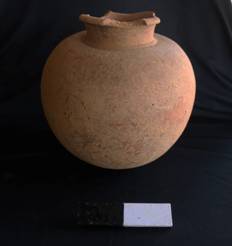
Explorations conducted in and around Gottiprolu within a radius of 15 kilometers revealed important vestiges viz., fortified early historic settlement at Puduru, Sunbrahmanya temple at Mallam, unique rock cut laterite stepped well at Yakasiri, Vishnu temple at Tirumuru. Further the entire seacoast on the east is dotted with various forms of antiquarian remains extending from Tamil Nadu and culturally linked with each other.
The two fortified townships within the gap of 15kms during early historic times indicates the significant strategic location was preferred by the early historic people for trade in the region keeping in view of proximity of the sea, River and Lake (Pulicat).


